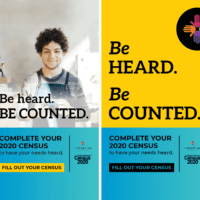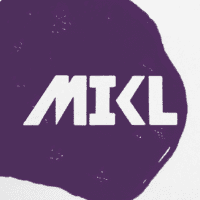How In God’s Name Do You Write An Estimate?
By / /
By Grinder
Typically this is something that I would ask my friends and peers about. However, this time I thought I’d open up this discussion to a few more people. So at the risk of sounding like a totally green designer, how do you write an estimate?
On the surface this seems like a stupid question. It is most certainly a complicated question, one which may be too complicated to address in a single post. So let me try to narrow down the question a little. I’m not looking for how much do I charge for this or that. I’m looking for what the content should be. What do you say in an estimate? What do you need to say and how do you say it?
Here’s where this is coming from. I’ve made many bad decisions and mistakes when it comes to estimating projects. Haven’t we all. This has led me to develop a rather robust estimate that I use on all my freelance projects in an attempt to avoid all those ugly situations I found myself in before. My estimate is an adaptation of AIGA’s “Standard Form of Agreement for Graphic Design Services.” Actually it’s a combination of that and the AIGA “Standard Terms and Conditions for Designer / Client Relationships” that I have adapted to suit my individual needs. Both are found in AIGA’s book “Professional Practices in Graphic Design.”
The original forms are far more detailed than I need them to be and I’m a pretty detail oriented person. I think for the most part my freelance projects are not on a scale that needs so much information or details. However, even though I have pared it down it takes me way too long to estimate a project because I’m trying to complete my damn form.
My estimate is broken down into four sections each with their own subsections. Here is an outline of what my estimates include now:
1. PROJECT
1.1 Project Description
2. COMPENSATION
2.1 Estimated Cost of the Project
2.2 Payment Schedule
2.3 Project Expenses (out-of-pocket)
2.4 Third Party Services
2.5 Early Payment Discount
2.6 Late Payment
3. PROJECT SCHEDULE & OUTLINE
3.1 Project Phases Responsibilities & Presentations
a. Design Phases
b. Deliverables (in each phase)
c. Client Responsibilities (in each phase)
d. Revisions Allowed (in each phase)
3.2 Project Timeline
4. OBLIGATIONS RIGHT & RESPONSIBILITIES
4.1 Client Responsibilities
4.2 Usage Rights
4.3 Samples
4.4 Project Cancellations Rejections & Terminations
4.5 Dispute Resolution
4.6 Client Agreement
4.7 Designer Agreement
Now you can see why I hate doing estimates. I’m looking at breaking this up into two documents. An estimate that clearly and simply states how much and what you’ll get for your money and having a contract once an estimate is approved that covers all the other details that are in my Estimate and Standard Agreement for Design Services now. I used to think I had the bare minimum of what needed to be covered in an estimate. But now my estimate is getting in the way of estimating projects.
So, how do you estimate? What do you feel are the key components to an estimate? (Please do not share an actual estimate with pricing and client details.) Have you found any other good resources out there with guidelines on writing estimates? Share the knowledge, share the love.






Comments
patrick August 14, 2008
Great topic Grinder.
Can
Great topic Grinder.
Can someone also address this from a writer’s perspective?
Joe Mease August 14, 2008
I would add another section
I would add another section between 1 and 2…called “assumptions”.
Basically just a bulleted list of project assumptions. for example :
1. the site will be built to play on all browsers with Flash player 9 or great.
2. Joe Mease Creative will not be responsible for any hosting related issues.
3. Client will provide all creative assets, including approved layout files, fonts, color guidelines, etc.
—-
I have found that if you articulate your own assumptions about the project, you can nip a lot of future headache in the bud.
Bryce Boyer August 15, 2008
Great topic! I’m glad to see
Great topic! I’m glad to see it up for discussion. I’ll throw in some $.02 from a photographer’s point of view.
For photographers, there are several pieces of software out there that help create estimates and invoices.
For years, I used a free one for years called Photobyte. It is similar to Fotobiz (both designed in Filemaker Pro). However, when Photobyte came down with the FLU on my computer and when my all my files became corrupted – I got no love from customer support, as often is the case with freeware.
http://www.zimberoff.com/photobyte.htm
I now use a program called Fotobiz that allows me to go through a punch list of expenses, creative fees, usage fees, etc. Here is the URL:
http://www.cradocfotosoftware.com/
A peer of mine is happy with his software called Hindsight:
http://www.hindsightltd.com/
-Bryce
http://www.BryceBoyerProductions.com
Alan Bucknam August 21, 2008
The AIGA and GAG books are
The AIGA and GAG books are both good places to start, as is The Business Side of Creativity, by Foote. It also addresses the assumptions portion of things. The best estimate shows what you will provide, at a given fee, what the final deliverable will be, and what the scope of both the creative’s and the client’s efforts will include. I always make it clear that they are partners, not just paymasters, and their active involvement is critical to the success of the project. In addition to the other terms, this is one of the most crucial ones to write in the estimate, and to emphasize when you sit down with the client and go over it with them.